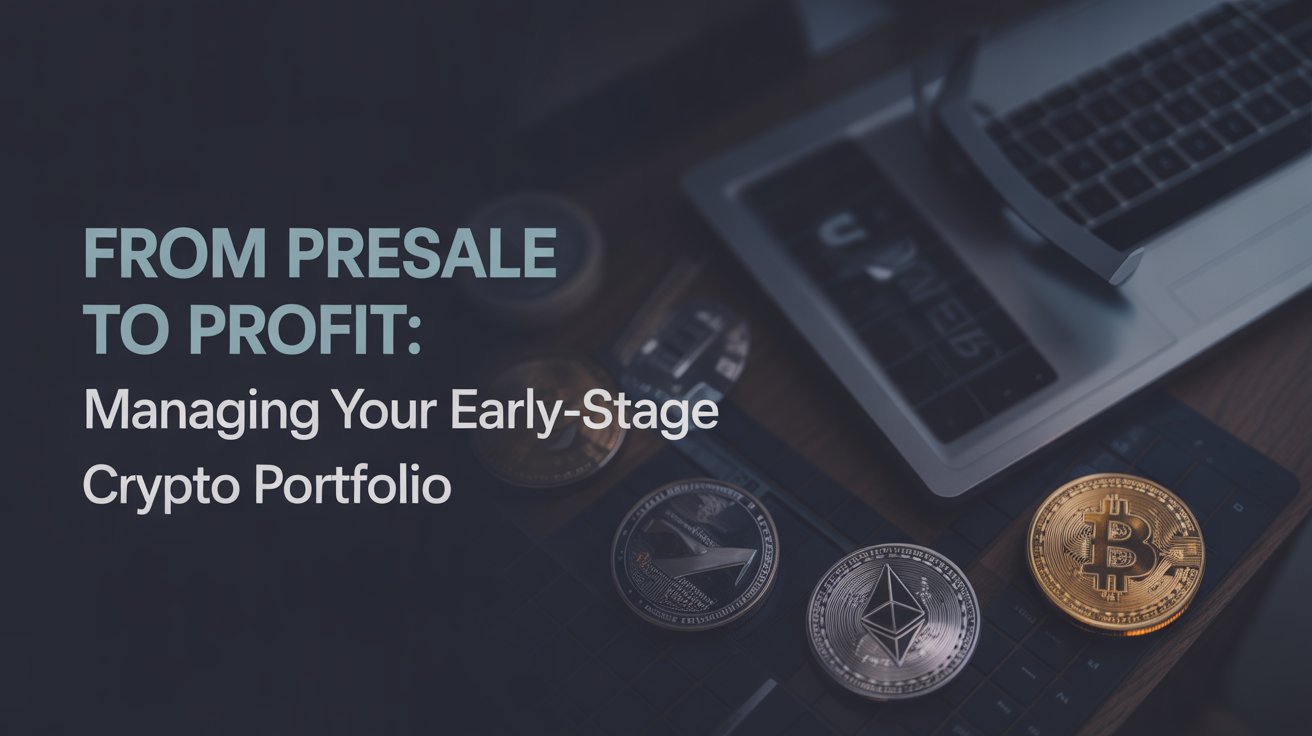
From Presale to Profit: Managing Your Early-Stage Crypto Portfolio
Everyone loves the idea of getting in early — buying into promising projects before the public launch.
But every early-stage crypto investor quickly learns a hard truth: managing multiple presales gets messy fast.
You’re not just buying tokens; you’re buying a timeline — one that involves allocation tracking, token unlocks, cliffs, and vesting schedules. Without structure, it’s almost impossible to know what your portfolio is actually worth.
Let’s break down how to manage your early-stage portfolio effectively — from presale to profit.
1. Keep track of every allocation (not just token balances)
Most investors only log their wallet balances — but that’s just the tip of the iceberg.
When you invest in presales or seed rounds, you need to track:
Token name and ticker
Allocation amount
Purchase price and total cost
TGE date (Token Generation Event)
Vesting schedule details (cliff, frequency, duration)
Wallets used
Without this, you’ll have no overview of your real exposure or upcoming unlocks.
Even one missed TGE can throw off your ROI tracking.
2. Understand your vesting timeline
Most presale deals include vesting schedules — structured token releases over time.
For example:
10% at TGE, 3-month cliff, then 10% monthly for 9 months.
That means your tokens don’t all arrive at once — and the unlock pattern determines when you can sell.
If you don’t track these events, you’ll constantly be surprised by sudden price dips when major unlocks happen.
A good portfolio system should automatically calculate unlocks and show your total vested vs. unvested balance at any time.
3. Ditch the spreadsheets
You can track one or two projects in Excel. Maybe three.
But once you start managing multiple launchpads, private rounds, or OTC deals — it collapses.
Common spreadsheet problems:
Manual updates cause errors
No way to visualize vesting progress
Hard to calculate real-time ROI
Impossible to stay organized when using multiple wallets
At that point, you need a structured, automated system — something that turns chaos into clarity.
4. Calculate your real ROI
ROI in early-stage investing isn’t about your current wallet balance — it’s about what’s unlocked, what’s sold, and what’s still vesting.
For example:
You bought 10,000 tokens for $1,000.
Only 2,000 are unlocked, and you sold them for $400.
Your spreadsheet might say “–60% ROI”.
But in reality, you’ve only sold 20% of your position — and 80% of your tokens are still vesting.
A proper ROI calculation includes:
Amount vested
Amount sold
Unrealized value (based on token price)
Total allocation cost
Once you can see that clearly, you can make smarter sell decisions and avoid panic selling.
5. Automate everything with VC-Flow
That’s exactly where VC-Flow comes in.
Instead of juggling spreadsheets and notes, you get a clean dashboard that tracks everything automatically:
✅ Add presale, private, or seed-round allocations
✅ Visualize vesting schedules and unlocks
✅ Log token sales and automatically calculate ROI
✅ Monitor upcoming unlocks across your portfolio
From your first investment to your final unlock, VC-Flow gives you the clarity you need to make data-driven decisions — not guesses.
Final Thoughts
Early-stage crypto investing offers massive upside — but only if you treat it like a real portfolio, not a collection of random wallets.
The difference between chaos and clarity is the system you use.
Stop managing your deals in spreadsheets and start tracking them like a pro.
🚀 Try VC-Flow — the smarter way to track your crypto investments.
VC-Flow Team
Author

